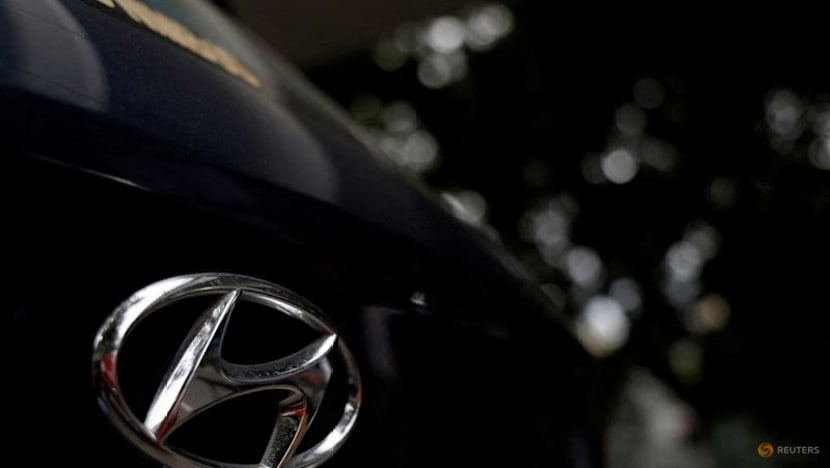Hyundai Motor to ramp up US output, trims profit margin goal on tariff hit

FILE PHOTO: Logo of Hyundai Motor Group on a car outside an automobile showroom is pictured in New Delhi, India, September 6, 2024. REUTERS/Ainnie Arif//File Photo
SEOUL : Hyundai Motor said on Thursday it aims to produce more than 80 per cent of the vehicles it sells in the U.S. in America by 2030 in response to U.S. tariff policies, as the South Korean automaker ramps up capacity at its Georgia plant.
The automaker said in a statement it trimmed its 2025 operating profit margin target to 6-7 per cent from a previously announced 7-8 per cent, citing the impact of U.S. tariffs. The company said it still expects profit margins to improve to 7-8 per cent by 2027 and 8-9 per cent by 2030.
Hyundai Motor, which together with affiliate Kia Corp is the world's third-biggest automaker by sales, said its Georgia factory will reach production capacity of 500,000 vehicles a year by 2028, with a mix of hybrid and electric vehicles (EVs).
Jose Munoz, co-CEO of Hyundai Motor, speaking on Thursday at an investor day in New York, said he hopes the U.S. and South Korea can find solutions for short-term business travel for specialised workers, after South Korean workers were detained during a raid at its battery factory in Georgia.
Munoz said many of the detained workers had been helping calibrate and test advanced battery production technology at a plant supporting Hyundai’s U.S. operations.
Hyundai said 40 per cent of its vehicles sold in the United States, its biggest market generating about 40 per cent of its revenue, were produced in America this year.
“Hyundai’s plan to build 80 per cent of the vehicles it sells in the United States could help cushion the impact of U.S. tariffs under Trump, but with uncertainty over whether those tariffs will remain after his administration, such a sharp increase in U.S. production, considered the highest in the industry, could later become a fixed-cost burden,” said Shin Yoon-chul, analyst at Kiwoom Securities.
Shin said Hyundai will need to justify why maintaining U.S. production at that level would still make sense in the long run even if tariffs are removed, for instance by showing that once its Georgia factory breaks even, deploying humanoid robots there could further improve profitability.
The automaker also plans to expand its global hybrid lineup to more than 18 models by the end of the decade, up from a planned 14 models announced last year, and will launch extended range electric vehicles (EREVs) in 2027 and its first mid-size pickup truck in North America before 2030.
The company said its Georgia factory will produce a mix of 10 hybrid and EV models.
Munoz said the company's revised financial guidance was based on the current 25 per cent U.S. tariff rate, adding that its plan to produce 80 per cent of the vehicles it sells in the United States locally is to reduce tariff exposure and strengthen growth, but would not come at the expense of South Korean output.
“We need to grow in the United States and produce what we sell in the United States, but Korea shouldn’t be concerned,” said Munoz.
He added that "we all hope that both governments will be able to achieve an agreement sooner rather than later," which would create opportunities this year and help Hyundai plan ahead next year.
On July 30, U.S. President Donald Trump said the U.S. will charge a 15 per cent tariff on imports from South Korea, down from a threatened 25 per cent, and reduce duties on automobile imports to 15 per cent from the current 25 per cent, in return for Seoul investing $350 billion in the United States.
Washington this week implemented a lower 15 per cent tariff rate on imports of cars and auto parts from Japan, at a time when South Korea is still facing 25 per cent tariff rates for autos.
Seoul and Washington have been struggling to overcome obstacles to finalise the trade deal agreed in July, with details around a $350 billion investment fund yet to be settled.
In July, Hyundai Motor said U.S. tariffs cost the company 828 billion won ($606.37 million) in the second quarter, and the impact will be larger in the July to September period.













